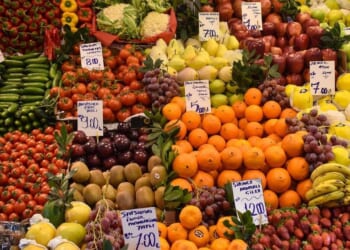Mexico is facing a severe obesity crisis. More than 35% of school-age children are overweight or obese, placing the country among those with the highest rates in the world. The trend worsens with age: 2 out of 5 adolescents and 7 out of 10 adults are affected by the same condition.
President Claudia Sheinbaum unveiled Vive Saludable, Vive Feliz, a health initiative that includes a ban on the sale of candy, salty snacks, and sugary drinks in schools. The Internet quickly dubbed her Mexico’s “almond mom”—referencing the diet-obsessed parents often mocked online. Images of empty shelves and beverage refrigerators stocked exclusively with bottled water flooded social media as the policy took effect on March 29.
The ban has even extended to university cafeterias, impacting students who are legal adults. Several campuses have reported sharp declines in snack and beverage sales, with some establishments considering shutting down altogether to avoid fines or financial losses.
Is this prohibition really the solution to Mexico’s obesity problem?
Mexico’s processed food and beverage industry is a major economic driver, with food manufacturing valued at around 1.8 trillion pesos in 2023 and beverages contributing approximately 639 billion pesos. At the heart of this sector is FEMSA, the world’s largest Coca-Cola bottler by sales volume.
Past regulatory efforts to curb unhealthy consumption, such as the implementation of front-of-package warning labels in 2020, had little impact. These black octagonal labels warn of excess sodium, sugar, saturated fat, or high calorie content, and consumers largely ignore them. Some even mocked them, joking that “the more octagons a snack has, the better it tastes,” as if anyone eating a bag of Doritos is expecting a zero-calorie meal.
This latest policy shift operates under the flawed assumption that restricting access will significantly change behavior. In reality, children may no longer be able to purchase Takis and sodas at their school’s kiosk, but they can still stop at OXXO or 7-Eleven. History shows that prohibition doesn’t eliminate demand; it merely forces consumers to find alternative (and sometimes more inconvenient or even dangerous) ways to obtain what they want.
Ironically, the federal government is now competing in the chocolate industry with Chocolate del Bienestar (“Wellness Chocolate”), promoted as a healthier, socially conscious alternative, which carries three front-of-package warning labels for excess calories, sugar, and saturated fat. Sheinbaum defended it by claiming it has “just a little sugar” and more cacao than commercial brands. But the contradiction is hard to ignore: the same government that bans snacks in schools is now distributing its own chocolate that wouldn’t be allowed past the school gates. Apparently, if it’s state-made, the sugar doesn’t count.
Sheinbaum’s policy arrives at a precarious moment for Mexico’s economy. The country is on the brink of a slowdown, as its main trading partner, the United States, is increasing tariffs on key Mexican exports. The last thing Mexico needs is additional internal restrictions that create uncertainty in the market.
Regulations like these not only burden businesses but also distort economic incentives. Instead of fostering a culture of personal responsibility, the government is imposing top-down mandates that are likely to backfire.
Tackling childhood obesity—and any type of obesity—is not the government’s job. While Mexico’s cultural affinity for comida chatarra (“junk food”) makes it challenging for parents to promote healthy habits, the answer is not an overreaching state acting as a dietary enforcer.
Sheinbaum’s “almond mom” approach may generate social media buzz, but it is unlikely to deliver meaningful health improvements. Real change comes from informed choices, not government bans.







